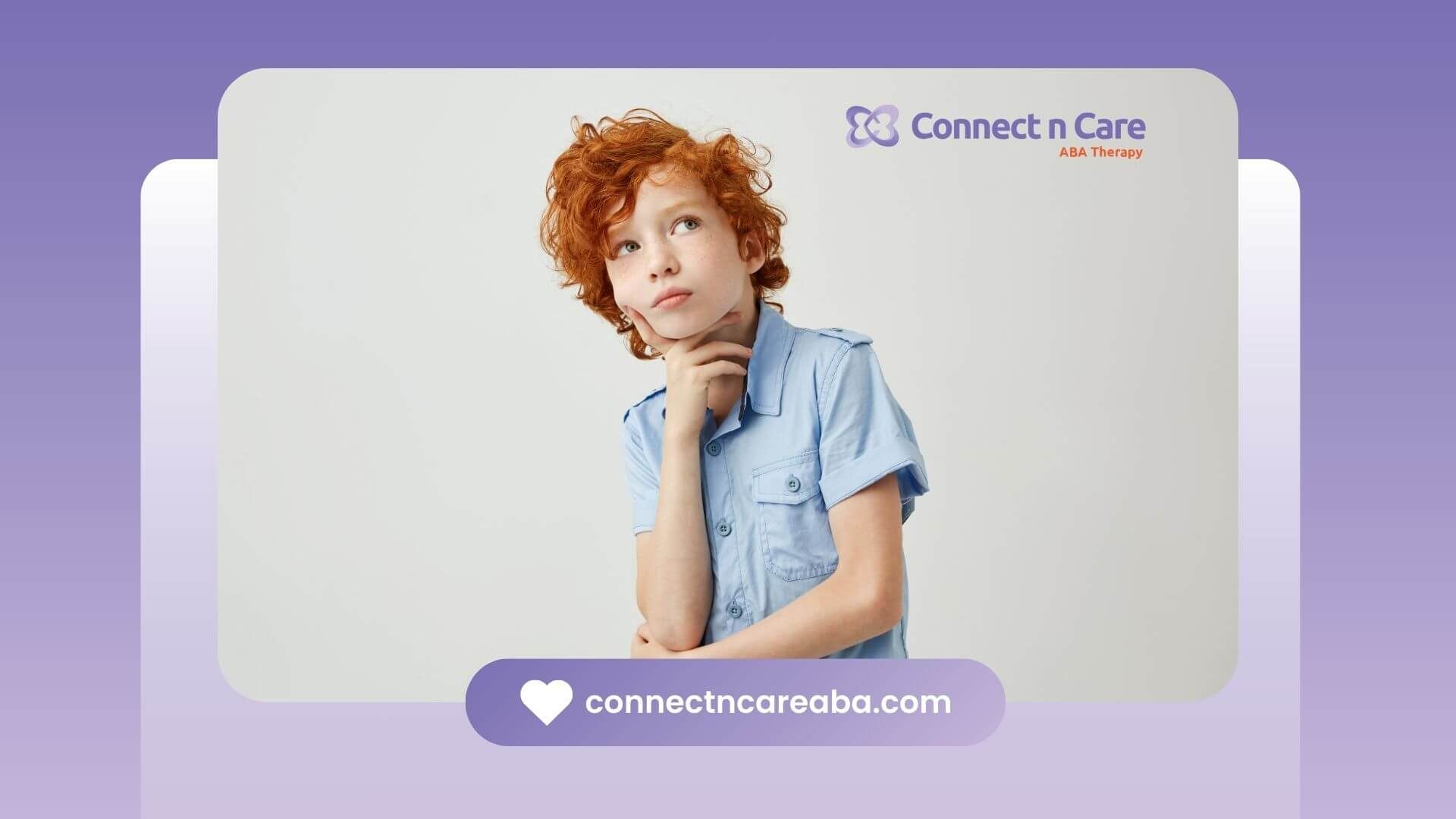Understanding and processing emotions can be challenging for individuals with autism spectrum disorder (ASD), and alexithymia is one of the primary reasons behind this difficulty. Alexithymia is a condition marked by difficulty identifying and describing emotions. Though not exclusive to autism, alexithymia is more prevalent among autistic individuals, affecting up to 50% of people on the spectrum. This overlap has raised awareness about how alexithymia impacts the autistic experience, particularly in areas like emotional communication, social interactions, and mental health.
This article explores the relationship between autism and alexithymia, the challenges it brings, and ways caregivers, educators, and therapists can support autistic individuals who experience alexithymia.
What is Alexithymia?
Alexithymia, from the Greek words meaning "no words for emotions," describes a difficulty in recognizing and verbalizing emotions. People with alexithymia might have a hard time understanding their own feelings or identifying emotions in others. Commonly associated symptoms include:
- Difficulty differentiating between emotions and physical sensations.
- Limited emotional vocabulary.
- Minimal emotional awareness.
- Challenges understanding nonverbal cues in social settings.
Importantly, alexithymia is not an official mental health diagnosis but rather a trait that varies among individuals. People with alexithymia may also struggle with introspection and may rely on logic or facts rather than emotional intuition in decision-making processes.
The Connection Between Autism and Alexithymia
Though alexithymia is distinct from autism, the two often coexist. Studies indicate that approximately 50% of autistic individuals experience alexithymia. This overlap has prompted research into the interplay between the two, particularly since the emotional and social challenges associated with alexithymia can amplify those experienced in autism.
Commonalities and Differences
While both autism and alexithymia can influence social and emotional processing, they do so in unique ways:
- Social Interactions: Autism often involves challenges in interpreting social cues, while alexithymia specifically limits emotional understanding and expression.
- Emotional Processing: Individuals with autism may recognize emotions but struggle with socially appropriate responses, whereas those with alexithymia may find it challenging to identify their own emotions in the first place.
- Communication: Autism-related communication issues typically involve broader difficulties in social language, while alexithymia impacts verbal expression of feelings specifically.
By understanding these differences, caregivers and therapists can develop targeted strategies to address both autism and alexithymia, creating a more supportive environment for autistic individuals.
The Impact of Alexithymia on Autistic Individuals
The presence of alexithymia can amplify some of the challenges already associated with autism, making it even harder to navigate social relationships and manage personal emotions. Here are several areas where alexithymia may have a significant impact:
1. Emotional Awareness and Regulation
People with alexithymia often find it hard to recognize and understand their emotions, which can make it difficult to regulate them. Without a clear sense of what they're feeling, they may struggle to address emotions healthily, leading to increased anxiety or frustration.
- Challenge: Autistic individuals with alexithymia may feel "emotionally stuck," unable to process or release emotions constructively.
- Impact: This can result in increased irritability, difficulty coping with stress, or even physical symptoms like stomachaches or headaches as unaddressed emotions build up.
2. Interpersonal Relationships
For autistic individuals, social communication is already challenging, and alexithymia can add an extra layer of complexity. Without the ability to recognize or communicate feelings, relationships with family, friends, or peers may become strained.
- Challenge: Alexithymia can hinder expressions of empathy, as recognizing others' emotions and responding appropriately requires emotional awareness.
- Impact: Close relationships may suffer if an individual is unable to reciprocate emotional signals, respond to others' needs, or provide emotional support, even when they genuinely care.
3. Mental Health
Research has shown that individuals with both autism and alexithymia may face a higher risk of mental health issues, including anxiety, depression, and stress-related conditions. Without the tools to identify, express, or address emotions, people may feel overwhelmed, misunderstood, or isolated.
- Challenge: Suppressed or misinterpreted emotions can lead to chronic stress, burnout, or episodes of depression.
- Impact: The inability to express or process emotions effectively may make it challenging to communicate mental health struggles, leading to untreated or undiagnosed conditions.
Support Strategies for Individuals with Autism and Alexithymia
While alexithymia presents unique challenges, there are practical ways to help autistic individuals navigate their emotions and improve their emotional understanding. Below are some strategies that families, educators, and therapists can implement to offer support.
1. Developing an Emotional Vocabulary
Introducing and practicing emotional vocabulary can empower individuals with alexithymia to better identify and describe their emotions. This can be achieved through:
- Emotion Charts: Visual aids, such as emotion charts or wheels, can help individuals match words to specific feelings.
- Emotion Journals: Writing about their day or experiences can encourage self-reflection and improve emotional literacy over time.
- Use of Simpler Terms: Instead of complex or nuanced terms, encourage the use of basic feeling words (e.g., happy, sad, angry) as a foundation.
2. Mindfulness and Self-Awareness Exercises
Mindfulness practices can help individuals become more in tune with their body and mind, providing a sense of calm and clarity when emotions feel overwhelming or confusing.
- Body Scans: This exercise guides individuals in recognizing physical sensations associated with emotions, such as tense shoulders or a racing heart, which can signal underlying feelings.
- Mindful Breathing: Focusing on breathing can provide a grounding effect, allowing individuals to take a step back and assess how they're feeling before reacting.
- Guided Meditations: Using apps or videos, individuals can follow meditations that promote self-awareness and emotional relaxation.
3. Social Skills Training
Since alexithymia can make it challenging to interpret social cues and respond emotionally, social skills training can help individuals develop an understanding of how emotions fit into social interactions.
- Role-Playing Scenarios: Practicing different social situations can help individuals learn to recognize common emotional cues and practice responses.
- Facial Expression Recognition: Using photographs or videos, therapists can teach individuals to recognize expressions of happiness, sadness, anger, and other emotions, strengthening their ability to interpret others' feelings.
- Video Feedback: Watching video recordings of their own interactions can offer insights into their own nonverbal cues and reactions, increasing self-awareness.
4. Cognitive Behavioral Therapy (CBT)
CBT is a therapeutic approach that can help individuals identify and manage negative thought patterns. While traditionally used for anxiety and depression, CBT has also shown promise in supporting those with alexithymia.
- Thought and Emotion Tracking: Individuals learn to track their thoughts and potential emotions in response to different situations, which promotes self-reflection and helps them recognize emotional patterns.
- Behavioral Responses: By developing positive behavioral responses to stressors, CBT helps individuals find healthier ways to process and express emotions.
5. Parental and Caregiver Involvement
Family members and caregivers play an essential role in helping autistic individuals with alexithymia develop emotional understanding. Supportive involvement can include:
- Modeling Emotional Expression: Caregivers who openly express and label their emotions can serve as role models, helping individuals understand that emotions are normal and manageable.
- Encouraging Open Communication: A safe environment where individuals feel comfortable expressing their feelings (even if they’re unsure what those feelings are) can foster trust and self-awareness.
- Positive Reinforcement: Recognizing progress, such as successfully identifying a feeling or handling frustration calmly, reinforces positive steps toward emotional awareness.
The Importance of a Supportive Environment
A supportive environment, both at home and in therapy, can make a significant difference for autistic individuals with alexithymia. By creating an inclusive space that respects each person’s unique emotional needs, caregivers and educators can help individuals:
- Build self-confidence in identifying and expressing emotions.
- Develop meaningful relationships with others.
- Reduce frustration, anxiety, and social isolation.
Encouraging gradual, consistent progress while respecting each individual’s pace is key. Therapists, educators, and families who work together to support emotional growth can help individuals with autism and alexithymia thrive, reducing some of the social and emotional barriers they may face.
Conclusion
Alexithymia, while challenging, is manageable with the right support systems. By recognizing and accommodating this trait, families, therapists, and caregivers can foster emotional awareness, communication, and healthy social interactions in autistic individuals. The journey to emotional understanding takes time, but with patience and a supportive environment, individuals with autism and alexithymia can build meaningful relationships and feel confident in expressing themselves.
At Connect n Care, we are dedicated to providing individualized support and therapy options tailored to each person’s unique needs, including addressing challenges related to alexithymia. We strive to create a nurturing environment where every individual feels understood, respected, and empowered.
Frequently Asked Questions
What is the main difference between autism and alexithymia?
Autism is a neurodevelopmental condition that affects social interactions and communication, while alexithymia is a trait that involves difficulty recognizing and expressing emotions. Although they frequently overlap, they are distinct.
Can alexithymia be treated?
While alexithymia is not “treated” in the traditional sense, support strategies such as cognitive behavioral therapy, mindfulness, and social skills training can improve emotional awareness and expression.
How can caregivers support an autistic individual with alexithymia?
Caregivers can provide support by modeling emotional expression, creating a safe environment for communication, and using tools like emotion charts or journals to build emotional vocabulary and awareness.









